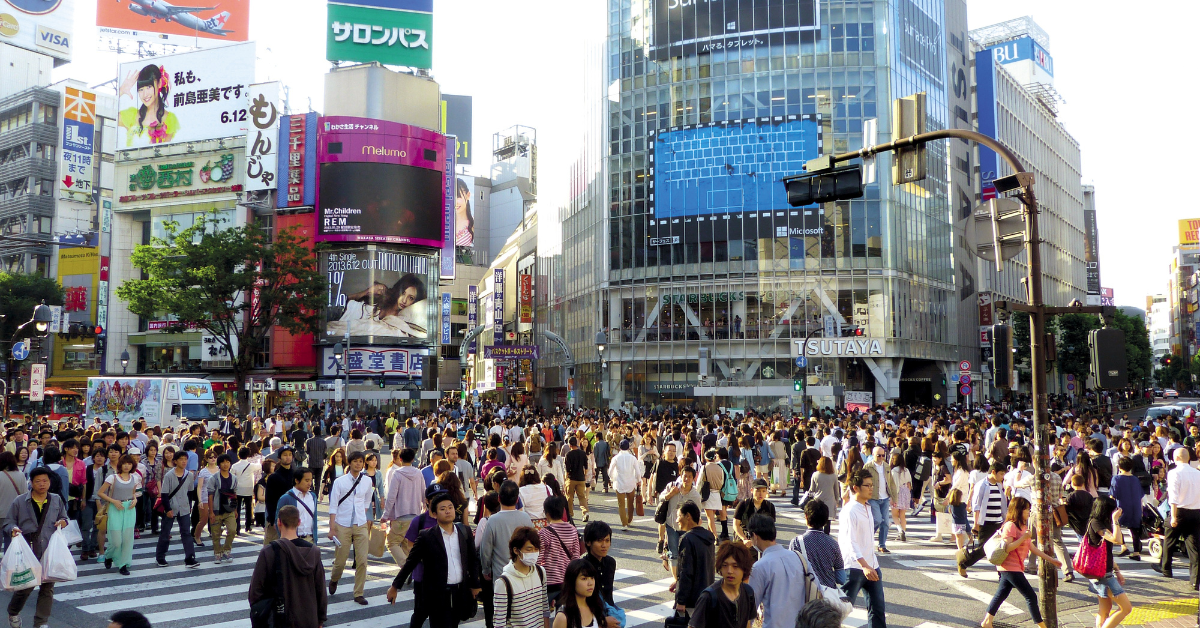The Shibuya Scramble Crossing is one of the busiest pedestrian intersections in the world, with thousands crossing at once. For foreign visitors, it is a spectacular, once-in-a-lifetime experience, while for Japanese locals, it is simply part of their daily routine. Understanding this contrast helps travelers appreciate the true cultural meaning of the crossing.
What is the Shibuya Scramble Crossing
Located right outside the Hachiko Exit of Shibuya Station, the crossing allows people to move in all directions simultaneously when the light turns green. At peak times, as many as nearly 3,000 people may cross at once. The scene has a cinematic intensity, and tourists instinctively take photos and videos. Surrounded by fashion buildings, cinemas, and cafés, it also functions as a hub of youth culture. For Japanese locals, it is simply a transportation route, while for tourists, it is a symbolic Tokyo experience.
How Japanese People Feel
For Japanese people, the crossing is a path of daily life, not a sightseeing spot. Office workers push through the crowd on their way to work, students hurry to school, and shoppers head toward stores. Therefore, the most common opinion is: “It’s too crowded and hard to walk.” At the same time, many feel pride because Shibuya’s crossing frequently appears in world-famous movies and music videos. Japanese people thus hold two contrasting impressions of the crossing: inconvenience and pride.
Differences from Tourists’ Perceptions
For foreign tourists, the Scramble Crossing is a “must-see destination.” They often say: “It’s amazing that people don’t bump into each other” and “The energy is overwhelming.” While Japanese people see it as just another crosswalk, tourists treat it as an event, stopping for photos and videos.
| Perspective | Japanese Impressions | Tourists’ Impressions |
|---|---|---|
| Purpose | Commuting, shopping | Sightseeing, photo-taking |
| Emotion | Crowded and tiring | Energetic and exciting |
| Recognition | A city traffic hub | A world-famous landmark |
| Action | Cross quickly | Take photos and videos |
The Orderly Chaos Admired by Tourists
The most remarkable feature of the Scramble Crossing is that order is maintained despite the massive crowds. Pedestrians instinctively adjust their pace, avoiding collisions with minimal effort. This reflects Japan’s cultural value of “not disturbing others.” While Japanese see it as ordinary, tourists describe it as “miraculous orderliness.”
| Feature | Japanese View | Tourists’ View |
|---|---|---|
| Movement | Adjust pace unconsciously | Surprised at orderly flow |
| Sense of Rules | Value not disturbing others | See it as cultural symbolism |
| Impression | Everyday scene | A point of national pride |
Shibuya Scramble at Night
At night, the crossing shows a completely different face. Giant screens, neon lights, and streams of people merge into a futuristic, vibrant scene. For Japanese, it is often “just a place to pass on the way home”, but for tourists, it represents “the vision of Tokyo as a city of the future.”
| Time of Day | Japanese View | Tourists’ View |
|---|---|---|
| Daytime | A route for commuting or shopping | The lively heart of the city |
| Nighttime | A stop on the way home | A fusion of lights and people |
| Event Times | Overcrowded and inconvenient | Like a festival, exciting |
What Foreign Visitors Should Notice
There are three key aspects foreign visitors should appreciate when visiting.
- Orderly Crowds – a unique way to experience Japanese culture.
- Changes by Time of Day – the scenery is entirely different at noon and at night.
- Diversity of People – youth, business workers, and tourists crossing together reflects a microcosm of modern Japan.
| Point | Description | Appeal |
|---|---|---|
| Order | People don’t collide | Symbol of Japanese manners |
| Day & Night | Scenery changes drastically | Worth visiting twice |
| Diversity | Many types of people gather | A living snapshot of Japan |
Stories Around the Crossing
Many personal stories reflect Japanese impressions of the crossing. A student from rural Japan might say, “I felt the scale of the city for the first time.” A businessman might complain, “The crowd made me late to a meeting.” Meanwhile, a Japanese host with foreign friends might say, “I felt proud when they were impressed.”
| Perspective | Experience |
|---|---|
| Student | Felt the magnitude of Tokyo |
| Businessman | Delays caused by crowds |
| Japanese Host | Proud to guide foreign friends |
| Tourist | Memorable and photogenic |
Symbolic Role of the Crossing
The crossing is not just an intersection but a stage symbolizing Tokyo’s urban culture. Impressions and experiences differ depending on one’s standpoint, but that variety itself is the crossing’s charm.
| Perspective | Viewpoint |
|---|---|
| Japanese | An extension of everyday life, mixing inconvenience and pride |
| Tourists | A non-routine experience, a Tokyo symbol that stays in memory |
| Social Role | A symbol of urban culture, a global point of attraction |
Conclusion
The Shibuya Scramble Crossing is a daily scene for Japanese people but a special landmark for tourists. Locals often see it as “crowded and inconvenient,” yet also as “a proud global symbol.” Tourists, on the other hand, are amazed by its energy and orderliness, seeing it as a cultural insight into Japan. The coexistence of these perspectives makes the crossing unique. When visiting, think of it not only as a busy street but also as a living stage of Japanese urban life for a deeper understanding of Tokyo.






